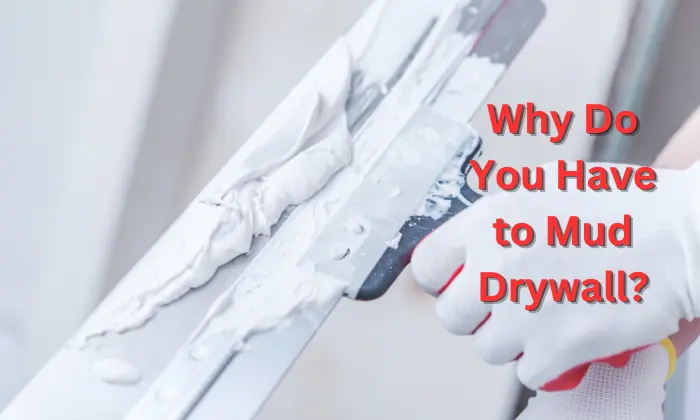Drywall is a versatile and widely used material in construction, valued for its affordability and ease of installation. However, simply hanging drywall isn’t enough to achieve a smooth, finished surface. Mudding drywall is a crucial step that ensures your walls are ready for painting or wallpapering. In this blog post, we’ll explore why mudding drywall is necessary and address the question: Can you paint drywall without mudding?
What Does Drywall Mud Mean?

Drywall mud, also known as joint compound, is a paste made of gypsum dust, water, and other additives. It applies to fill the gaps between drywall sheets, cover screws or nails, and create a smooth, seamless surface. Without mudding, the imperfections and joints in drywall would be visible, leading to an unprofessional finish.
Why Is Mudding Drywall Important?
Mudding is essential for several reasons:
Seamless Finish:
Drywall sheets have joints where they meet, and these seams would be visible without mudding. Applying drywall compound smooths out these seams, ensuring a uniform surface. Important to fix imperfections before painting or wallpapering, as they will show through the finish.
Increased Durability:
Mudding adds strength to the drywall by covering and reinforcing the joints and screws. This prevents cracks, dents, and other forms of damage that could compromise the integrity of the wall.
Soundproofing:
Drywall helps with soundproofing, but adding mud to the seams and corners creates a tight seal that reduces noise even more between rooms. This is crucial for maintaining privacy and comfort in a home or office environment.
Fire Resistance:
Joint compound also contributes to the fire resistance of a wall. Mudding fills gaps to slow fire spread, giving more time for evacuation and firefighting.
Can You Paint Drywall Without Mudding?
The short answer is no. Painting drywall without mudding is not recommended for several reasons:
Visible Seams and Fasteners:
Without mudding, the joints between drywall sheets and the screws or nails that secure them will be visible through the paint. This results in a rough, unfinished look that diminishes the overall aesthetic of your space.
Uneven Surface:
Drywall mud helps to even out the surface of the wall. Painting over unmudded drywall will highlight any imperfections, making them more noticeable. The paint will not adhere as smoothly, leading to an inconsistent finish.
Poor Adhesion:
Paint adheres better to a smooth, prepared surface. Mudding fills in small gaps and creates a solid base for the paint. Without it, the paint may not bond properly to the drywall, resulting in peeling or flaking over time.
How to Properly Mud Drywall
Mudding drywall is a multi-step process that requires the right tools and techniques:
Step 1 – Apply the First Layer:
Start by applying a thin layer of joint compound to the seams between drywall sheets. Use a taping knife to spread the mud evenly, then place a strip of drywall tape over the seam and press it into the mud. This reinforces the joint and prevents cracks.
Step 2 – Add Additional Layers:
After the initial layer has dried, put on a second layer of mud over the tape, using the taping knife to even it out. Continue this process, adding layers until the surface is smooth and the seams are no longer visible. Depending on the size of the gaps and the desired finish, you may need to apply several layers.
Step 3 – Sand the Surface:
After the final layer of mud has dried, sand the surface to remove any ridges or imperfections. This step ensures that the wall is completely smooth and ready for painting or wallpapering.
ROA Drywall: Expert Drywall Installation and Repair Services
If mudding drywall sounds like a daunting task, it’s always a good idea to hire professionals. ROA Drywall provides professional drywall installation and repair services to guarantee the best quality finish for your walls. Our team has experience in all aspects of drywall work, including hanging, mudding, hot mudding, sanding, and painting. Trust ROA Drywall to provide a seamless, durable, and aesthetically pleasing result for your home or business.
Conclusion
Mudding drywall is an essential step in the installation process. It creates a smooth surface for painting or wallpapering. It makes the drywall stronger. It helps with soundproofing and fire resistance.
Skipping mudding before painting drywall is not a good idea. This will lead to a bad finish and weak walls. For a perfect and long-lasting finish, it is important to mud drywall correctly.
If you are unsure of how to do this, consider hiring professionals like ROA Drywall. Professionals can ensure that they do the job correctly and efficiently when hired.